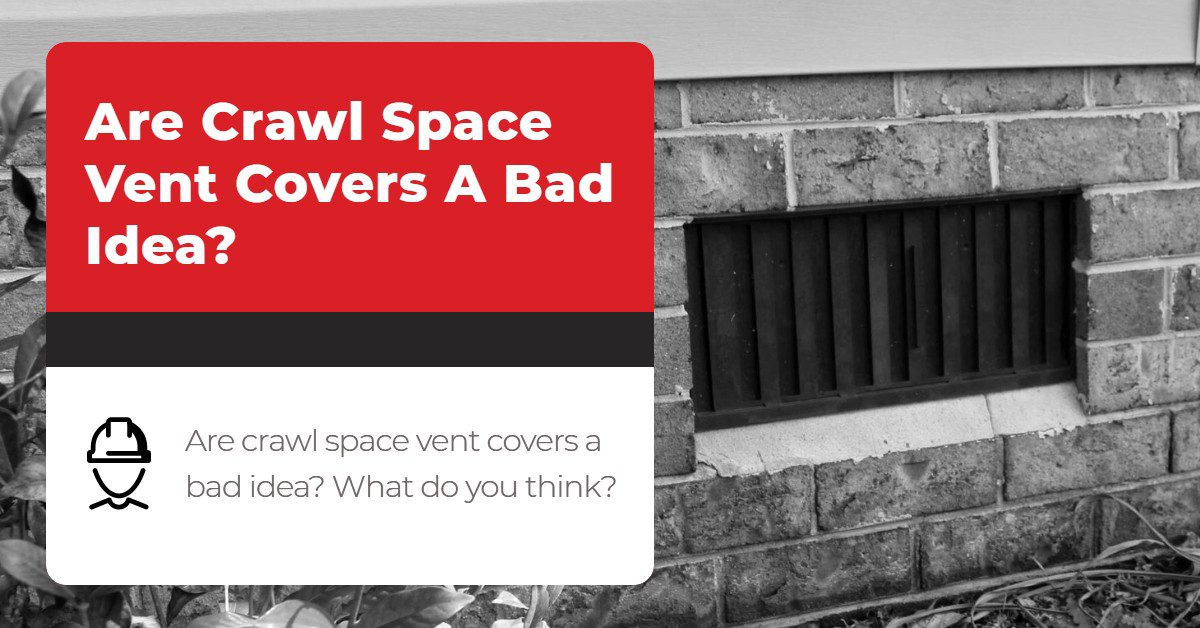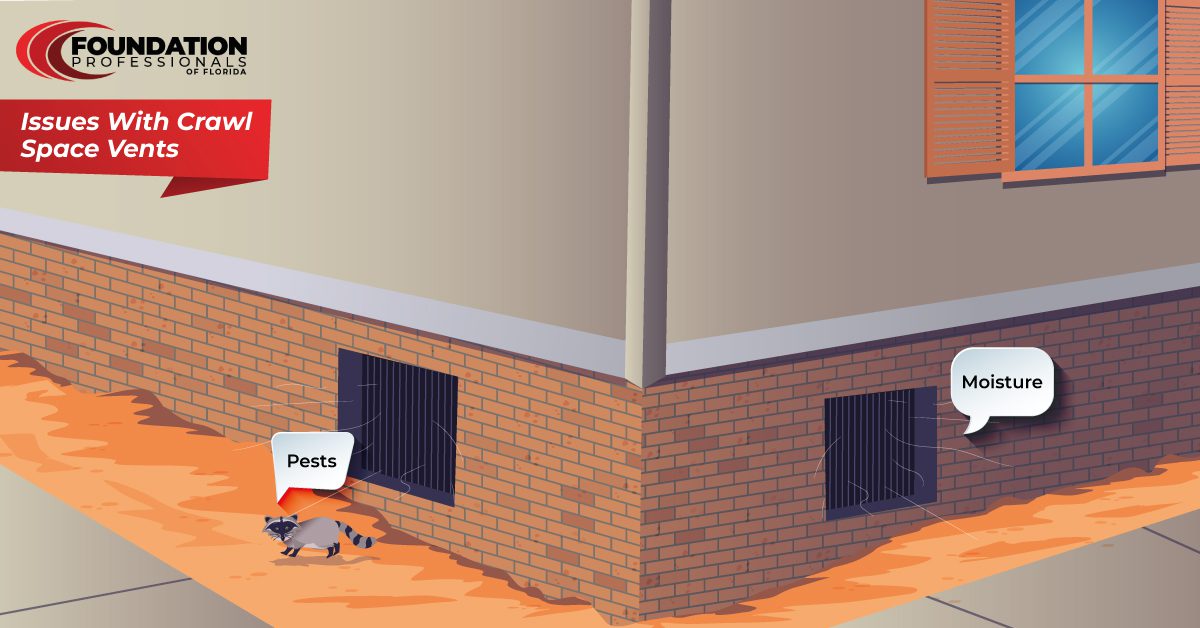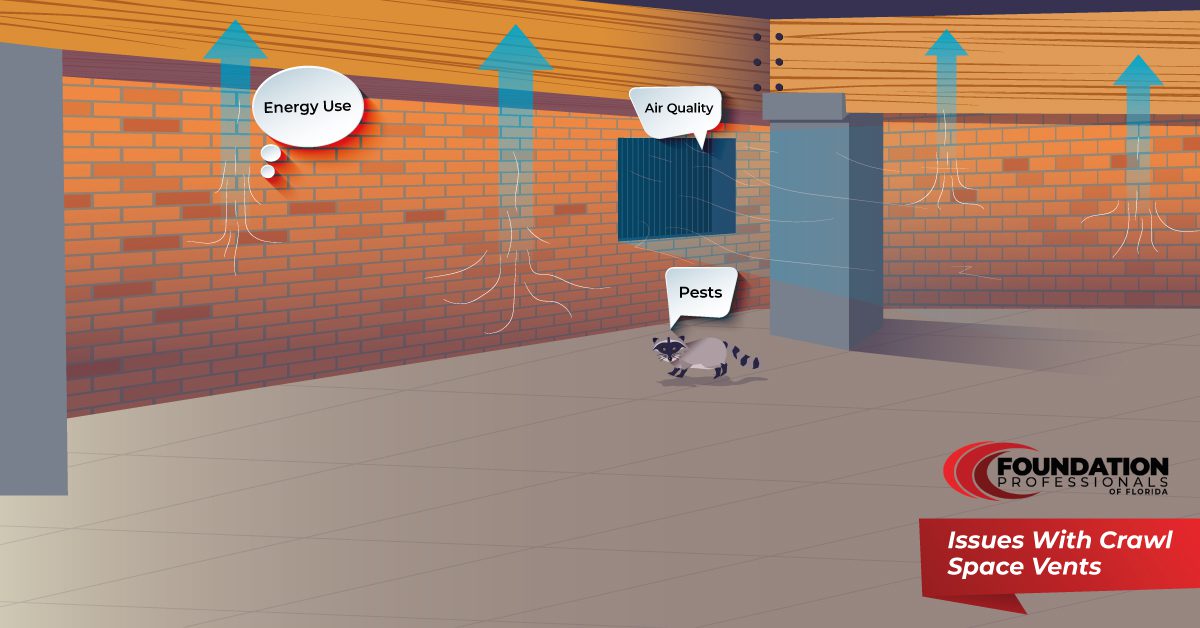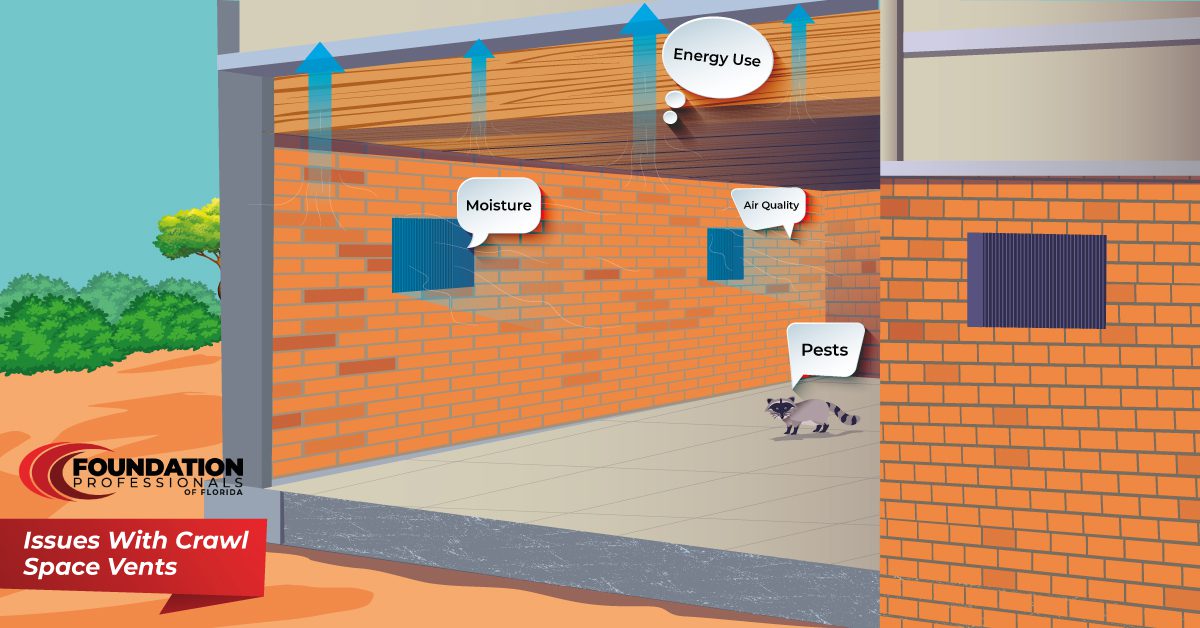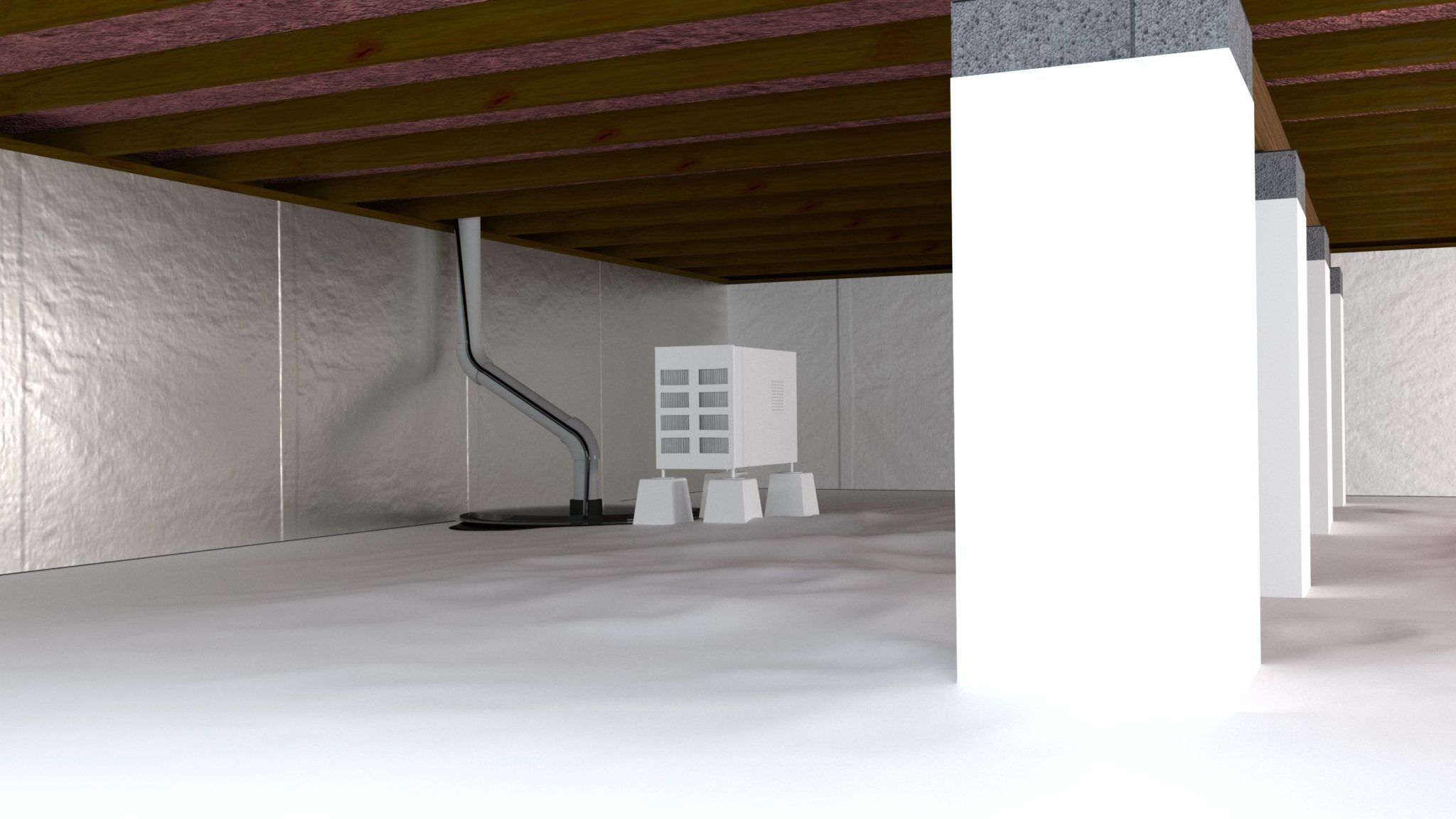Are crawl space vent covers a bad idea? What do you think? This article will explain if they are a terrible idea, what were crawl space vents originally for, and what to do about crawl space moisture. Stick around and find out if crawl space vent covers are a bad idea.
Are Crawl Space Vent Covers A Bad Idea?
NO! Crawl space vent covers are a good idea for sealing vents that cause more problems than they were meant to. Crawl space vents had a purpose, but now sealing them has been the recommended solution. We also provide cases where not permanently closing them can be effective, such as during the seasons.
What Are Crawl Space Vents For Then?
They were initially meant to allow air to circulate beneath your floor in the crawlspace, preventing moisture from building up. But instead, they allow air inside. Warm air can rot your floorboards, beams, joist and cause mold, and cold air can crack your pipes in the winter or cause condensation.
Moisture – Crawl space vents allow humid air to enter the lower level of your home. Once you have humidity, you have water, and once you have water, you have mold. Moisture also causes mildew and wood rot that can eat away at your floor joists and support beams.
Pests – During the winter, pests could wander inside your crawl space through your vents. You could be inviting mice, snakes, rats, raccoons, opossums, and more to move in with you.
Energy Use – If you are trying to heat your home during the winter, but you have a cave of cold air beneath you rising into your home, your heater is going to have a hard time. You can be confident you will have a spike in some bills.
Air Quality – Did you know you breathe the air of the floor below you? If your crawl space is allowing in humid, damp air, you will start breathing in some musty stuff, and this is just an invitation for breathing diseases.
Should You Close Them If You Have Them?
So if you have a crawl space and notice you have vents, what should you do? Building codes generally require working vents in the crawlspace to allow outside air to circulate under the floor in the summer to prevent moisture buildup.
When the air is drier in the winter, the vents are closed to lower the chance that the pipes in the crawlspace freeze. So one answer could be to open them during the summer and close them during the winter. Now keep in mind, most experts recommend closing them entirely to keep the humidity in your crawl space below 60%.
If You Have Problems With Crawlspace Moisture
Now, what do you do if you seal your crawl space vents but still have a moisture problem?
Crawl Space Encapsulation – Crawl space encapsulation is when a vapor barrier is placed inside your crawl space. A vapor barrier is a thin layer of impermeable polyethylene sheeting that prevents moisture diffusion through the basement wall, and this keeps humidity in your crawl space to a minimum.
Crawl space vapor barriers are the first line of defense against high humidity and poor indoor air quality. These encapsulation barriers are 10 to 20 mil thick, puncture-resistant, and made of a high tensile strength material that stops soil moisture from entering the space. These liners encapsulate the crawl space so that moisture cannot attack exposed wood and create mold and mildew.
Crawl space sealing prevents the humid air from settling in the space, creating condensation and promoting mold growth. Many studies have proven that a sealed crawl space creates a healthier and more energy-efficient home due to the elimination of humidity fluctuations.
Check out more about – What you need to know about crawl space waterproofing?
Crawl Space Sump Pump – A sump pump is a fixture in a home’s crawl space. It helps remove groundwater from underneath your home, preventing water from seeping through your floor. Water or heavy precipitation becomes a significant issue in your home without a sump pump (which sits in the sump “pit”). Sump pumps are also used to keep basements dry.
Dehumidifier – As a warning, you do not need a dehumidifier if your crawl space is vented. Otherwise, you will be just constantly dehumidifying outside air.
A crawlspace dehumidifier is installed in the encapsulated crawl space, positioned for optimum air circulation. Its fan circulates the clean & dry air throughout the area, keeping crawl space humidity levels down.
Who Can Help With Crawl Spaces & Vent Covers
If you need help sealing your crawl space, where it’s using vent covers, encapsulation, a sump pump, or a dehumidifier, who should you call? Check out Foundation Professionals of Florida, an award-winning and top-performing company. We specialize in all your crawl space, foundation, and slab repair needs and can provide any of the services above.

